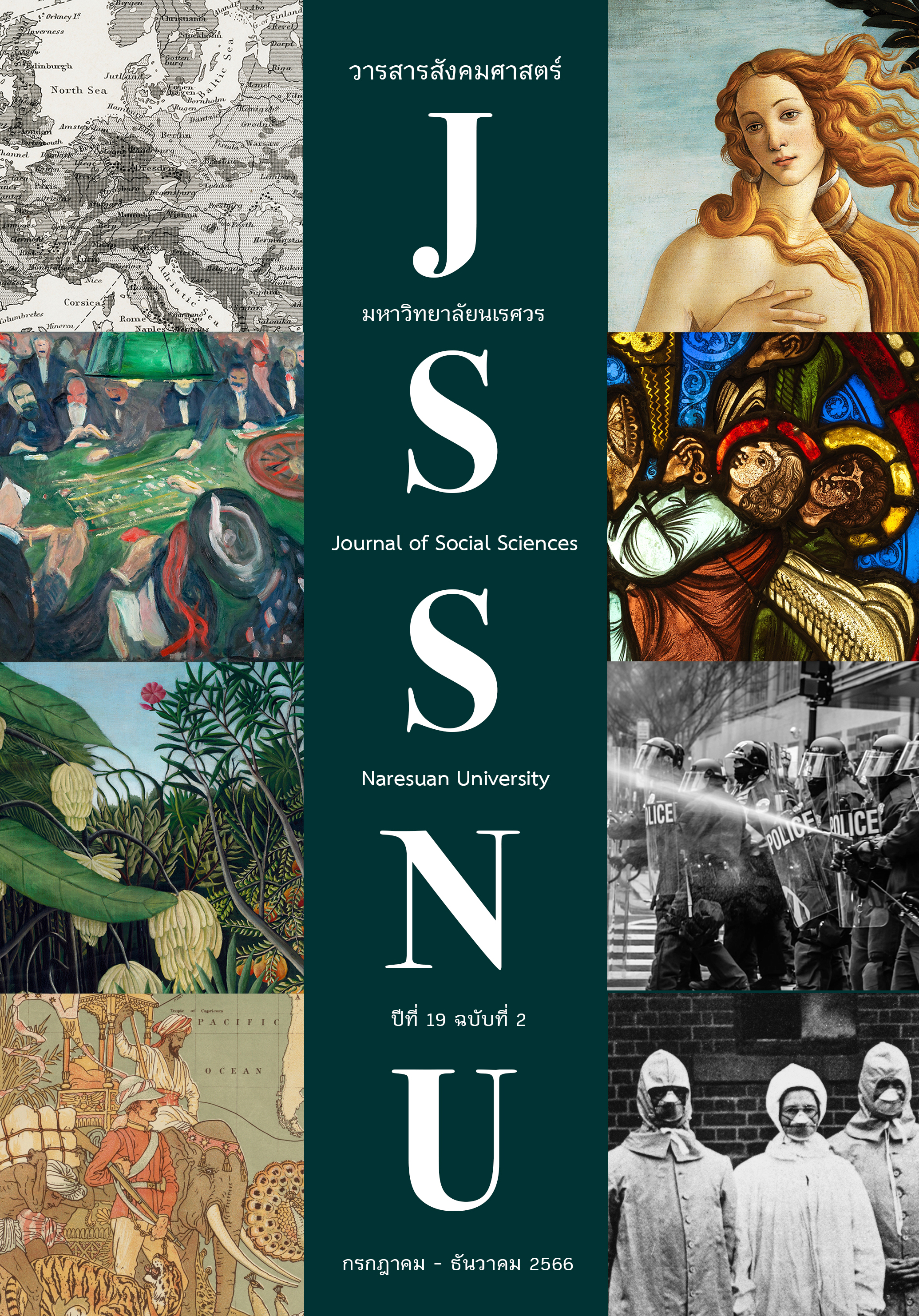Dynamics of Thai State Repression in Case of Free People Movements
Main Article Content
Abstract
This research article aims to study the difference and distinction of forms and ways of repression carried out by the state towards the mobilization of “Free People Movement” in various social and political contexts with their affects. Qualitative research was conducted through interviews of key informants who were movement leaders, staff of the Thai Lawyers for Human Rights-TLHR, as well as police officers, including data from lawsuit cases from the TLHR. The study reveals that Thai Government led by General Prayuth Chan-ocha had confronted the movements during 2020-2022 with various forms and ways of repression. The government had taken up an escalated force or coercive model as a repression and abolition for the demonstrations. The laws and judicial processes, i.e. Article 112 of Penal Code and other relevant laws, were also exercised with lawsuits made against movement leaders. The following-up with monitoring and threats were made towards them. The Information Operation (IO) was widely used to suppress the growing campaign of the Free People Movement.
Downloads
Article Details

This work is licensed under a Creative Commons Attribution-NonCommercial-NoDerivatives 4.0 International License.
References
BBC Thailand. (2020, October,14). Chumnum 14 tula: Pramuan hetkan chak patha “ suea lueang “ su chu sam nio sai khabuan sadet paiyannoi (in Thai). [From yellow shirt attack to three finger in royal parade]. BBC News. Retrieved from https://www.bbc.com/thai/thailand-54539098
Kurtz, L. R., & Smithey, L. A. (Eds). (2018). The paradox of repression and nonviolent movements. New York: Syracuse University Press.
Lertchoosakul, K. (2021a). Phonlawat lae phatthana kan khong khabuankan khlueanwai khong naksueksa thai nai chuang pi 2563-2564 (in Thai). [The Development and dynamics of the Thai student movement in 2020-2021]. (Research Report). Bangkok: Chulalongkorn University.
Lertchoosakul, K. (2021b). The white ribbon movement: High school students in the 2020 Thai youth protests. Critical Asian Studies, 53(2), 206-218.
McAdam, D. (1983). Tactical innovation and the pace of insurgency. American Sociological Review,48,(6), 735-754.
Pintobtang, P., & Ongla, O. (2022). Phonlawat dan rupbaep kan khuapkhum prappram khong rat to khabuankan ratsadon plot-aek (in Thai). [Dynamics of Thai State Repression in Case of Free People Movements]. (Research Report). Bangkok: Chulalongkorn University.
Porta, D. (1995). Social movements, political violence, and the state: A comparative analysis of Italy and Germany. New York: Cambridge University Press.
Porta, D., & Diani, M. (2006). Social movements: An introduction. Malden, MA: Blackwell
Porta, D., Peterson, A., & Reiter, H. (2006). The policing of transnational protest. Aldershot: Ashgate.
Porta, D., & Reiter, H. (Eds.). (1998). Policing protest: The control of mass demonstrations in western democracies. London: University of Minnesota Press.
Sombatpoonsiri, J. (2017). The policing of anti-government protests: Thailand’s 2013–2014 demonstrations and a crisis of police legitimacy. Journal of Asian Security and International Affair, 4(1), 95-122.
Thabchumpon, N., Pintobtang, P., Preechasilpakul, S. (1996). Kan khlueanwai khong khabuankan phak prachachon nai chonnabot kap kan prappram khong rat (in Thai). [People’ s movement in rural area and the state repression]. Journal of Political, Thammasat university,19(3), 68-90.
Thai Lawyers for Human Rights (TLHR).(2022, July 5). Mithunayon 65: Yot ruam phu thuk damnoenkhadi thang kanmueang ruam 1,832 khon nai chamnuan 1,095 khadi (in Thai). [June 2022: The total number of people in charges of political prosecution totals 1,832 people in 1,095 cases]. Retrieved September 2, 2022, from https://tlhr2014.com/archives/45692
The Standard. (2021, March 3). Ongkon nisit-naksueksa 18 mahawitthayalai pranam salai kan chumnum #mop 28 kumpha kho khamnueng thueng khwam pen manut (in Thai). [Student organizations from 18 universities condemn the political disband #28 February mob, considering of human being]. Retrieved September 2, 2022, from https://thestandard.co/student-organizations-of-18-universities-condemned-the-dissolution-of-the-protest/
Tufekci, Z. (2017). Tear gas: The power and fragility of networked protest. New Haven & London: Yale University Press.


